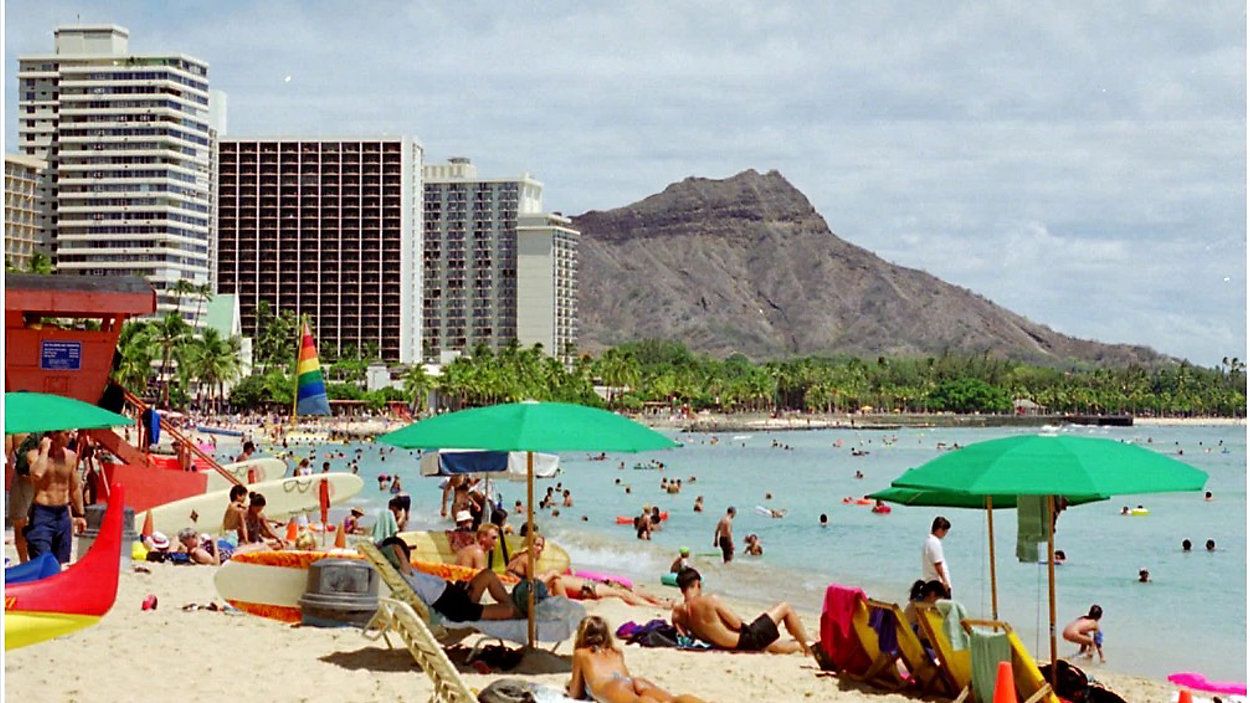HONOLULU, Hawaii — Hawaii’s economic growth will continue to progress, though at a slower rate due to limited population and labor force growth in the coming years, according to the latest economic forecast by the University of Hawaii Economic Research Organization.
“Hawaii’s economic outlook continues to be a story of two economies: a Maui economy that will only gradually recover from its post-wildfire downturn and the other counties as a group, whose visitor industries will continue to operate at a high level and whose macroeconomic condition will remain broadly favorable,” the report stated.
While statewide tourism numbers are down slightly from last year, Oahu experienced a boost over the summer. Looking ahead, UHERO predicts that the visitors from the continental United States, a sector that has dominated over the last few years, will see only incremental growth. Meanwhile, Maui hotels are experiencing declining occupancy rates as residents displaced by the wildfires are moved to other housing.
Overall, UHERO forecasts that real visitor spending statewide will remain flat through the end of the decade.
Given ongoing economic conditions, UHERO finds it unlikely that Japanese visitor numbers will return to their pre-pandemic levels.
“After tracking our forecasts for several years, the Japanese visitor recovery has slowed and their number remains at roughly half their pre-COVID level,” the report stated. “The weak yen has weighed heavily on daily spending. The currency has regained some lost ground as the Bank of Japan has begun to raise interest rates. Further appreciation should help to boost this market, although it will not play as large a role in Hawaii as it has in the past.”
UHERO said visitors from other countries will add to growth.
Labor conditions follow UHERO’s two economies characterization. Maui’s labor force has fallen by 5%, equivalent to about 4,200 workers. This may be because of disruption of the labor market due to the wildfires coupled with Maui’s ongoing housing crisis driving some residents to leave. In the rest of the state, labor conditions have been mostly unaffected, although job growth has slowed since the middle of last year. UHERO forecasts that growth will strengthen in 2025.
The UHERO forecast notes that housing affordability remains a challenge, especially on Maui, where rebuilding from the fires will take years and rents have already increased dramatically.
“Pending interest rate declines will give the home resale market a lift,” the report stated. “Overall construction will continue at a high level, supported by Maui rebuilding, other housing development and the huge federal military projects.”
UHERO said inflation has been more persistent in Hawaii than on the mainland due a lag in rent data being calculated into the consumer price index. However, pay raises have outpaced non-shelter inflation, indicating that real purchasing power for many in the state has grown. Total real personal income will rise 1.4% this year, with a greater gain expected next year.
UHERO’s long-term forecast is tempered by negative population trends.
“Hawaii has long seen dismal growth in per capita income, hampering our ability to attract in-migration of new families or to provide opportunities that would prevent out-migration of Hawaii residents,” the report states. “As our society ages and young people’s preferences have shifted, the ‘natural’ growth of our population from births being higher than deaths is ending. We will need to net in-migration if we are to see significant future labor force growth sufficient to meet looming challenges.”
Michael Tsai covers local and state politics for Spectrum News Hawaii. He can be reached at michael.tsai@charter.com.



